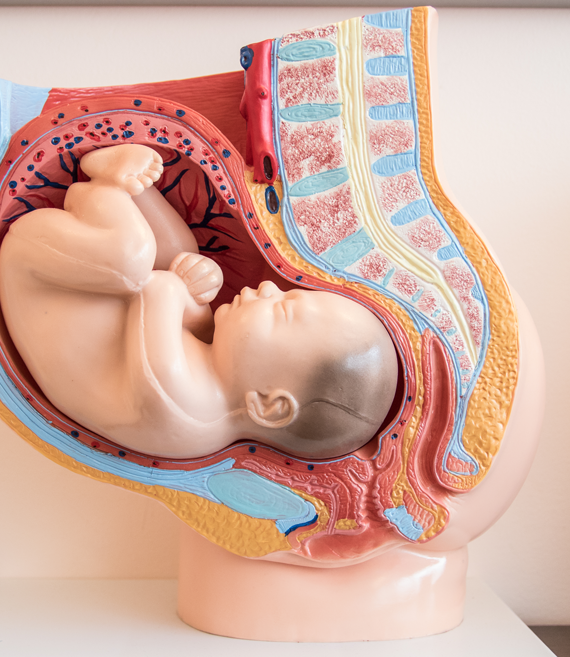TREATMENTS
Osteopathy
for baby’s
Treating infants requires more than just medical knowledge. Infants respond very differently to certain actions than adults simply because they are at the beginning of their emotional development. Thanks to our extensive experience with infants, we create a safe environment. We know how to touch the infant while involving the parents in what the infant is experiencing.
Birth is an intense and significant event where both the mother and the child undergo strong compression forces. Because the contractions push the baby further into the pelvis, where it has to make a turn too, these forces can affect the baby’s malleable skull and the developing vertebrae. These forces could lead to minor ailments such as a blockade of the first cervical vertebrae (the atlas) on the back of the head. Babies that experience excessive compression during birth can experience discomfort and maybe even pain without it being visible to parents. What parents could notice is a restless, tense, and inconsolable baby.
How to recognize specific issues (as a parent)?
• The baby has a preferred position
• The baby has a flattened head (Positional Plagiocephaly)
• The baby cries or vomits excessively
• There is a restriction of movement when the baby turns his/her head
• The baby moves his/her arms like he/she is experiencing stress
Osteopaths can safely treat your baby and help you find the ideal position for your baby too.
In the first four months, the human skull is very malleable, partially because the fontanelles are still there. By treating blockades, movement restrictions, or skull issues, the baby can relax, and the stress response will diminish. By making sure that the baby is not in the same position continuously, the cranial base is more likely to grow symmetrical. Osteopaths can safely treat your baby and help you find the ideal position for your baby too.
The baby’s organs are not fully developed during birth. It usually takes another six weeks to develop them properly. When compression during delivery has deformed the spine, signals from the brain might be transmitted inadequately. This compression could influence the development of the baby’s organ system. An example is a not fully matured lower esophageal sphincter, which causes the regurgitation of food (reflux). It usually is not a problem when your baby vomits. In case your baby vomits 15-30 times a day, chances are that the esophagus or airways become irritated. We pay close attention to these matters during every examination.
The treatment of your baby
When you and your baby come to the first consultation, we will start by talking about the course of the pregnancy and giving birth while paying close attention to the baby, but also your role as a mother. You could think of questions such as “What does the daily routine for the both of you look like?” and “What characterizes your baby?”.
After the consultation, the osteopath will examine the baby and pays close attention to the neck and skull. The osteopath does this examination on mom or dad’s lap or the treatment table in the office. The osteopath usually starts with examining the feet or pelvis to go via the tummy, chest, and back to the head. By doing so, the baby has time to get used to the osteopath’s touch while the entire body gets checked.
In some cases, we find blockades during this examination that we can resolve immediately. The techniques that we use are usually experienced as pleasant by babies, although some can react strongly. Those strong reactions generally do not last a long time, and the baby will relax shortly after, and maybe even fall asleep.
At the end of the consultation, the osteopath determines whether the treatment of the infant could be beneficial. If that is the case, we give an estimation of how many appointments will be needed to restore the baby’s balance. Indicatively, most babies will require three visits at most. Afterward, you decide if and when you would like to get the treatment done.



